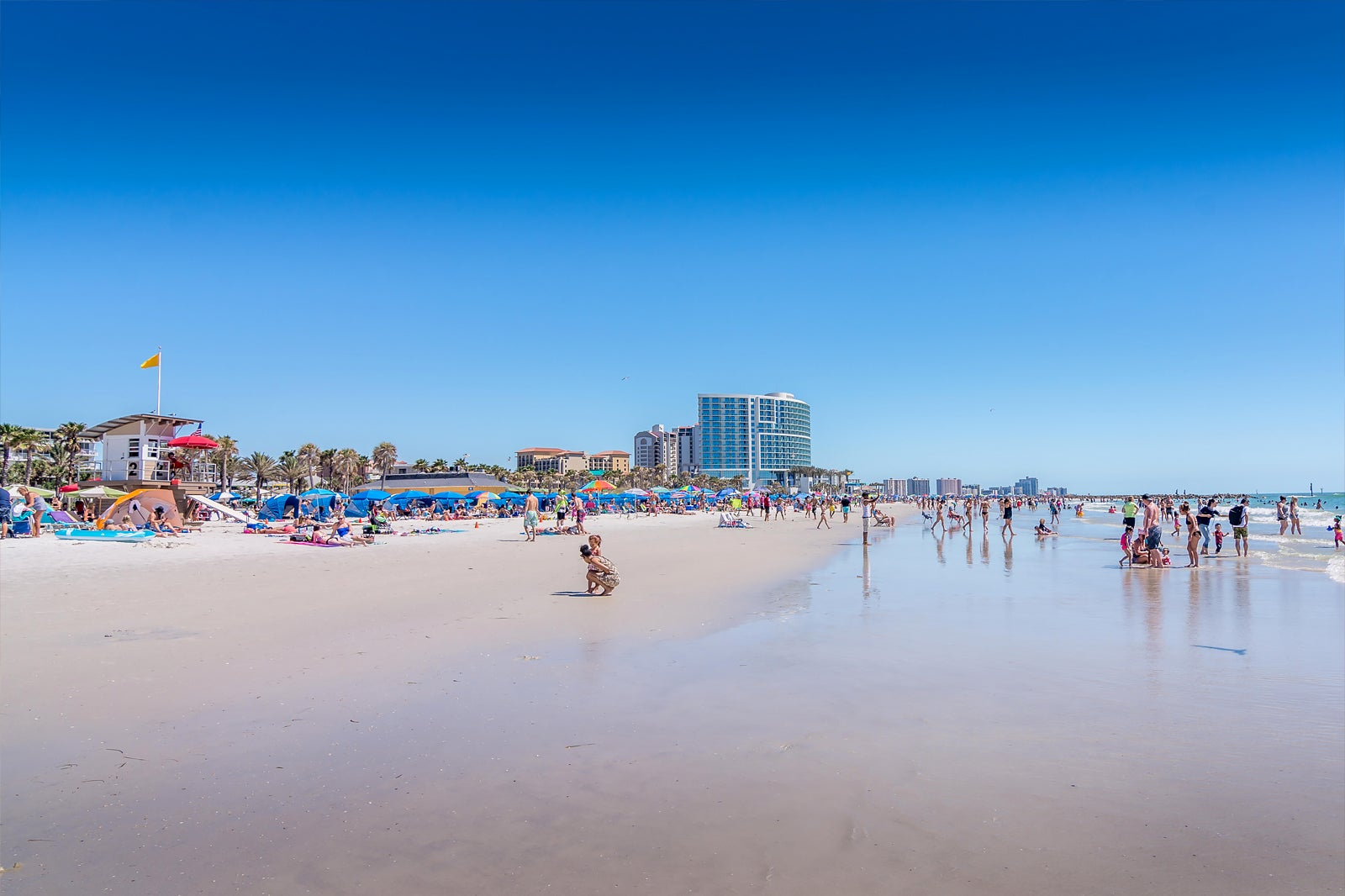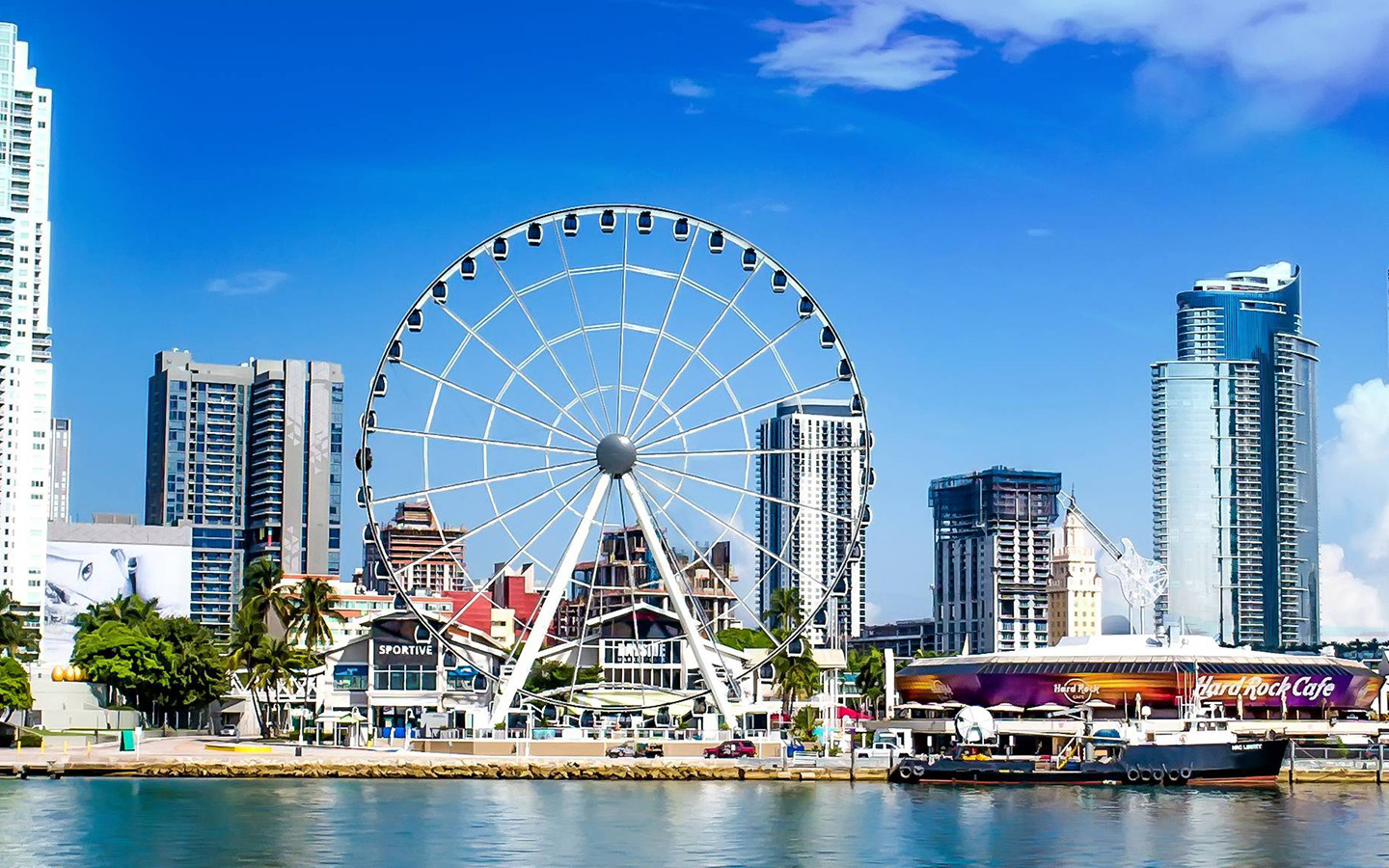Although better known for its cultural attractions, St. Petersburg’s location along the Gulf of Finland also provides some inviting beaches offering recreation and relaxation.
| Beach Name | Description |
|---|---|
| St. Petersburg Beach | Urban beach with amenities, vibrant umbrellas, and festive vibe. |
| Fort De Soto Park | Pristine shores, historic fort, nature trails, and bird sanctuary. |
| Pass-a-Grille Beach | Retro vibe, clean sands, calm waters, and beach cottages. |
| Treasure Island Beach | White sand, clear waters, city park facilities, and local events. |
| Madeira Beach | Barrier island beach near John’s Pass Village, with sandcastle contests and sunsets. |
| Redington Beach | Serene shorelines, nature preserves, and fishing pier for a remote feel. |
| Egmont Key State Park | Remote island with historic sites, accessible only by boat. |
| Indian Rocks Beach | Family-friendly, picturesque, with nature preserve trails and water sports. |
| Sand Key Park | Recreation-packed barrier island with nature trails and picnic pavilions. |
| Sunset Beach | Old Florida vibe, ideal for sunbathing and sunset watching, with beachfront eateries. |
| Shell Key Island | Uninhabited barrier island offering wilderness and seclusion, accessible by boat. |
| Fred Howard Park Beach | Scenic spot on the causeway, with tranquil swimming and varied amenities. |
Ranging from bustling urban strands to pristine shores outside the city, here are 12 of the top beaches to enjoy during a visit to St. Petersburg.
St. Petersburg Beach

Name and Location: St. Petersburg Beach is located on a barrier island off the coast of St. Petersburg in Pinellas County, Florida. It stretches for around 5 miles from Pass-a-Grille to Treasure Island.
History and Significance: St. Pete Beach has been a popular tourist destination since the early 1900s. The historic Don CeSar Hotel opened in 1928 and helped establish the area as a glamorous getaway. Today it continues to be a vibrant beach community.
What to Expect: Soft white sand, warm gulf waters, beach volleyball, restaurants, shops, hotels, music, and sunsets. The beach has lifeguards and beach wheelchairs available.
Visitor Information: Metered parking and parking lots available. Beach concessions for rent. Free trolleys run the length of the beach.
Located on the Gulf of Mexico just west of downtown, St. Petersburg Beach is a lively and easily accessible urban beach getaway. Its white sand beach stretches over 7 miles with space for swimming, volleyball, sailing and simply unwinding oceanside. Beachfront resorts, restaurants, shops and amenities make this a convenient option.
St. Pete Beach provides picnic tables, grills, playgrounds and beach rentals. The historic Beach Theater and nearby Loiterer’s statue honor the area’s quirky history. Sunbathers flock to the strand’s vibrant umbrellas dotting the sand. With its festive vibe and beneficent breezes, St. Pete Beach invites carefree fun for all.
Fort De Soto Park

Name and Location: Fort De Soto Park is located on five interconnected islands at the mouth of Tampa Bay in the city of Tierra Verde, Florida.
History and Significance: The islands were used as military outposts over time before becoming a county park in 1963. Today it is a popular recreation area with beaches, fishing, camping, historic sites, and nature trails.
What to Expect: Miles of unspoiled beaches, swimming, kayaking, biking, birdwatching, historic fort, native wildlife like manatees. Very large park with natural scenery.
Visitor Information: Park open daily sunrise to sunset. Entrance fee per vehicle. Kayak, bike rentals available. Campsites and food concessions available.
For pristine shores and abundant recreation, Fort De Soto Park occupies its own island just south of St. Petersburg. Its 1,136 acres contain seven miles of unspoiled beaches for shelling, swimming, kayaking and wildlife viewing. Nature trails, camping, picnic shelters, and bike paths encourage exploration.
Historic Fort De Soto itself dates back to the Spanish-American War era, with some original buildings and batteries remaining. The park lies within a bird sanctuary providing excellent opportunities for spotting herons, egrets, pelicans and other species. With diverse ecosystems in a tranquil setting, Fort De Soto Park provides the ultimate beach retreat.
Pass-a-Grille Beach

Name and Location: Pass-a-Grille Beach is located on the southern tip of St. Pete Beach island in Pinellas County. It stretches from 8th Ave to the historic Hurricane Restaurant.
History and Significance: One of the oldest communities in the area, founded in the late 1800s as a fishing village. Known for its laid-back, retro vibe and historic cottages.
What to Expect: A quieter, more residential beach area with smaller crowds. Cottages, mom-and-pop shops, restaurants, beach lounging, fishing pier.
Visitor Information: Limited public parking. Biking and walking recommended. Several restaurants and bars within walking distance.
Located at the southern tip of St. Pete Beach, Pass-a-Grille Beach has a laid-back, retro vibe harkening back to Old Florida. Its clean sands and calm Gulf waters attract loyal locals and travelers seeking a quieter beach experience. Secluded yet lively, Pass-a-Grille seduces visitors to unwind and forget their worries awhile.
Beach cottages and mom-and-pop businesses line the main thoroughfare, while loungers and umbrellas dot the shoreline by day. Pass-a-Grille provides amenities like beachfront restaurants, picnic facilities, volleyball courts and shelling opportunities for enjoying this nostalgic beach community.
Treasure Island Beach

Name and Location: Treasure Island Beach is located on Treasure Island, a barrier island in Pinellas County. It stretches over 2 miles from 104th Ave to Sunset Vista Rd.
History and Significance: Developed as a residential community in the early 1900s. Named for a local legend about buried pirate treasure. The area grew into a popular tourism destination over time.
What to Expect: White sand, clear water, beachfront hotels, restaurants, shops. Volleyball courts, playground, trails, nightlife. Family-friendly atmosphere.
Visitor Information: Public parking lots and garages available. Beach wheelchairs and water stations provided. Free trolleys connect the island’s attractions.
Situated north of St. Pete Beach, Treasure Island Beach boasts two miles of white sand beaches along the Gulf. Its clear waters offer prime conditions for swimming and kayaking. The city park facilities include playgrounds, sports courts, picnic shelters complete with grills, and walking paths amid natural dunes.
Treasure Island Beach has spawned a lively local scene while retaining its small town ambiance. Beachgoers flock to annual events like the Sanding Ovations sand sculpting competition and Seafood and Music Festival showcasing local talent. With family-friendly recreation and a welcoming spirit, Treasure Island Beach hits the sweet spot between tranquility and fun.
Madeira Beach

Name and Location: Madeira Beach is located on Madeira Beach island, south of Clearwater Beach in Pinellas County. It stretches about 2 miles from John’s Pass to Tom Stuart Causeway.
History and Significance: Developed as a small fishing village in the early 1900s. The area grew into a popular tourist destination famous for its seashell shops.
What to Expect: Soft white sand, clear shallow water perfect for swimming. Boardwalk lined with restaurants, bars, shops. Fishing charters, dolphin cruises, wave runners, parasailing.
Visitor Information: Paid public parking along the beach. Beach wheelchairs available. Free beach trolley connects area attractions.
Conveniently located across from popular John’s Pass Village, Madeira Beach stretches for an idyllic two miles on a barrier island facing the Gulf of Mexico. Its public shoreline provides everything for a classic beach getaway – gentle waves, soft white sand, annual sandcastle building contests, and renowned sunsets over the bay.
Complimenting Madeira Beach’s inherent assets, visitors can enjoy attractions like the historic John’s Pass boardwalk, water sports rentals, fishing charters, seaside restaurants, and local shops just steps away. Madeira Beach also hosts events like free summer concerts in its oceanside John Chappie Park.
Redington Beach

Name and Location: Redington Beach is located on the Gulf Coast between Madeira Beach and Indian Rocks Beach in Pinellas County, Florida. It stretches about 1 mile between 182nd and 190th Avenues.
History and Significance: Developed in the early 1900s as a small residential beach community. Remains a quieter, more peaceful beach option compared to busier neighboring beaches.
What to Expect: Relaxed pace, fewer crowds, peaceful vibe. Beach lounging, swimming, sunsets. Limited dining and shopping options. Friendly community feel.
Visitor Information: Free public parking along Gulf Blvd. No lifeguards, so swim at your own risk. Restaurants and shops within walking distance.
For a remote island feel near St. Petersburg, Redington Beach offers serene shorelines and nature preserves perfect for escaping crowds. Located mid-key on the barrier island of Redington Shores, this town prides itself on preserving Old Florida nostalgia and natural beauty. Its beaches shine with uncrowded expanses, multi-hued seashells, and romantic sunsets.
Beyond beaching, Redington Beach also provides biking trails, boardwalks over wetland habitats, and kayaking through the mangroves. The historic Gulf Beach fishing pier extends into the sea for saltwater fishing and viewing marine life. For both land and water recreation, Redington Beach delivers peaceful natural allure.
Egmont Key State Park

Name and Location: Egmont Key State Park is located on Egmont Key, a small island at the mouth of Tampa Bay accessible only by boat.
History and Significance: Former military base and lighthouse site dating back to the 1800s. The island is now a state park providing crucial nesting ground for sea turtles and shorebirds.
What to Expect: Secluded island feel. Beaches, snorkeling, hiking, fishing, birdwatching, spotting wildlife and shipwrecks. Ferry service required to access the island.
Visitor Information: Accessible only by ferry/charter. Boats depart from Fort De Soto. Fees per person. Limited amenities on island.
Accessible only by boat, Egmont Key lies off the mouth of Tampa Bay, providing Florida’s ultimate remote island experience. The undeveloped island features beaches of the softest powdery sand, perfect for strolling, shelling, fishing, or just enjoying pristine vistas. Wildlife thrives, including rare gopher tortoises.
Historic remains at Egmont Key include Fort Dade used during the Spanish-American War. A lighthouse and museum illuminate the island’s maritime history. Visitors willing to make the ferry ride will be rewarded with this protected oasis whose beaches remain blissfully untouched and unspoiled. It’s a perfect island escape.
Indian Rocks Beach

Name and Location: Indian Rocks Beach is located on Indian Rocks Beach island, between Clearwater Beach and Sand Key Park in Pinellas County. It stretches for over 2 miles along Gulf Blvd.
History and Significance: The area was home to native Indian mounds before being developed for tourism in the early 1900s. It grew into a popular beach destination with hotels, shops and restaurants.
What to Expect: Village-like feel with unique shops, eateries and live music. Nature preserve for shelling and wildlife. Kid-friendly shallow water. Sunsets over the Gulf of Mexico.
Visitor Information: Metered street parking and public lots. Weekly farmer’s market. Trolleys available seasonally. Pet friendly.
Located on a barrier island south of Clearwater, family-friendly Indian Rocks Beach offers gorgeous scenery and recreational variety. Its beaches delight with crystalline waters in vibrant hues, seashells galore, and frequently sighted dolphins. The city park provides amenities for picnicking and sports.
Visitors can also enjoy nature preserve trails through wetlands and coconut palm hammocks, kayaking through mangrove tunnels, kiteboarding with ample wind and shallows, fishing for smelt and trout, and discovering area restaurants. With laid-back vibes and picturesque shores, Indian Rocks Beach has broad appeal.
Sand Key Park

Name and Location: Sand Key Park is located on Sand Key island south of Clearwater Beach in Pinellas County, Florida. It spans 10 acres between Gulf Blvd and the Gulf of Mexico.
History and Significance: The park was established in the 1950s. Its picnic pavilions made it a popular recreation spot for residents and visitors over the years.
What to Expect: Shaded picnic areas, grills, playground, fishing pier. Bathrooms and concessions available. 0.5 miles of sandy beachfront for swimming, kayaking, sunbathing.
Visitor Information: $5 parking fee per vehicle. Beach wheelchairs available.
Encompassing 10 acres between Clearwater Beach and John’s Pass Village, Sand Key Park packs plenty of recreation into a barrier island oasis. Nature trails wind through habitats like mangroves and coastal oak hammocks, with observation decks for wildlife viewing. A kayak launch accesses the intracoastal for paddling among the mangroves.
The park’s bountiful facilities include picnic pavilions, playgrounds, volleyball courts, a tennis court, and boat ramp. A highlight is the lengthy fishing pier extending into the Gulf of Mexico – one of the longest piers on Florida’s west coast. For both land and sea pursuits, Sand Key Park entertains all interests.
Sunset Beach

Name and Location: Sunset Beach is located on the northern end of Treasure Island in Pinellas County, Florida. It spans from Sunset Vista Road to 127th Ave.
History and Significance: Sunset Beach has been a prime destination for watching the sunset since Treasure Island was developed in the early 1900s. It remains one of the best places to view sunsets over the Gulf of Mexico.
What to Expect: Wide, uncrowded beach area. Sunbathing, swimming, sunset viewing, walking, shelling. Limited amenities but beautiful natural scenery.
Visitor Information: Free beach-side parking. No lifeguards on duty, swim at your own risk. Restaurants and hotels within short driving distance.
True to its name, Sunset Beach delivers some of Tampa Bay’s most spectacular sunsets, along with a laid-back Old Florida vibe. Located on Treasure Island, this low-key beach offers white sands, swaying palms, and chilled-out bars and cafes lining the shore. It provides prime conditions for sunbathing, sailing, and of course sunset watching.
Sunset Beach also features amenities like beachfront eateries and resorts, equipment rentals, a fishing pier, and weekly farmer’s market. The annual Seafood Festival celebrates the area’s fishing heritage and seafood bounty. Lively yet tranquil, Sunset Beach brings out the sun’s majesty over the Gulf on full display.
Shell Key Island

Name and Location: Shell Key Island is an uninhabited island located off the coast of Tierra Verde in Pinellas County, Florida. It is only accessible by boat.
History and Significance: The island has been undeveloped since the 1900s. Its isolation provides important nesting habitat for shorebirds and other wildlife.
What to Expect: Secluded island setting. Shell-strewn beaches, snorkeling, wildlife viewing, fishing. No facilities, food, water available on island.
Visitor Information: Accessible only by private boat or charter. No public transportation. No amenities on island, pack accordingly.
Accessible only by boat about 10 miles offshore from St. Petersburg, Shell Key Island offers a sense of wilderness and seclusion hard to find so close to a major city. This uninhabited barrier island has no facilities or amenities – just pristine beaches strewn with a trove of seashells.
Visitors willing to make the trek are rewarded with shelling, fishing, birdwatching, and beachcombing opportunities. Shell Key Island is part of the Pinellas County Preserve system, so its habitats remain protected. Those seeking an escape from crowds will cherish this remote locale where sea oats sway and waves lap gently along untouched shores.
Fred Howard Park Beach

Name and Location: Fred Howard Park Beach is located in Fred Howard Park in Tarpon Springs, Florida. It spans over 700 acres on the Gulf Coast.
History and Significance: Originally named Howard Park when established in the 1960s. Expanded and renamed in the 1990s. Popular recreation spot with diverse ecosystems.
What to Expect: Pristine beach, swimming, trails, picnicking, playground, fishing, dog beach, nature viewing. Campsites available.
Visitor Information: Park open 7am to sunset. Entry fee per vehicle. Rentals available. Tram rides offered seasonally.
Situated on the causeway between Clearwater Beach and Tarpon Springs, Fred Howard Park Beach provides a scenic spot conveniently accessible from Tampa or St. Pete. Its 700 feet of beachfront on the Intracoastal Waterway channels both the ocean and bay, creating tranquil swimming for all skill levels.
Shaded picnic areas, a playground, volleyball court, and walking trail encourage lingering once beachgoers have soaked up the plentiful Florida sunshine. The park stays lovely and peaceful, perfect for wading in the cool Gulf waters while admiring dramatic sunsets over the bay.
Conclusion
With its prime Gulf coast location, St. Petersburg spoils beach lovers with an array of inviting shores minutes from downtown to remote undiscovered island gems. From unwinding on bustling strands packed with amenities to exploring unspoiled ecosystems, the area’s beaches capture any mood.
St. Pete Beach and neighboring towns offer classic family-friendly fun and vibes. Rejuvenating nature preserves at Egmont Key and Shell Key Island provide total tranquility. And beloved local haunts like Pass-a-Grille Beach immerse you in nostalgic Old Florida charm. With such diversity – from lively to lonely – St. Petersburg’s strands deliver sparkling water and sand suited for every taste.





Join the Conversation